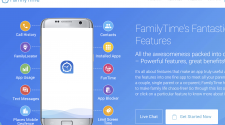Ever since the development of the iPhone, designers have focused on making new and exciting apps. There is an app for everything. Application design is one of the fastest growing parts of technology. Sometimes, they focus more on developing new apps than improving user experience. Here are some simple ways to improve user experience.
- Too Many Notifications
Some applications come with way too many notifications. It can be enough to drive a person crazy. Their phone will be dinging every few moments with a new notification.
It is really important for the applications to keep notifications to a minimum. Most people don’t need nor want to know what every other person is doing on the same app. Apps that drive people nuts are more likely to be deleted.
- Extremely Long Tour Features
A simple tour of the most important features of the application is fine. Users want to be able to start using their new app immediately. However, apps do need to be simple. Useful applications are easy to use; most people don’t want to spend time on a complicated app to complete the needed task.
Tour features are good, but some apps take too long to give the tour. Make sure you include a way to opt out for those who prefer to brave the unknown without a tour.
- Assuming You Know What Users Want
You need to know and understand what users think about your current applications. It is easy to just go on and do updates without finding out what your users think.
Most of your feedback is going to be from people who have had issues in the past. It is important to remember those who have not had issues. You have to reach out to them. What do they want to see change in your application? Do they have suggestions to make the app function more efficiently for their needs?
Don’t assume you understand what all of the users want. Reach out and make sure.
It’s important to mention here that not all user feedback is going to be positive. While negative feedback is good, don’t ever take it personally. Take the negative feedback, talk to the team about it, and figure out a way to fix the issue. Don’t fall into the trap of beating yourself up over it.
- Skimping on Tech Features
People spend a lot of money on smartphones; they like to be able to use the features that come with their phones. Smartphones are extremely advanced nowadays. User experience companies focus on utilizing all of the capabilities that the smartphones offer.
They paid the money for these phones to be able to do nearly anything. Improve their user experience by including these capabilities.
- Super Long Setup Wizards
Once a user has downloaded the app, chances are they just want to get down to business and use the app for their intended purpose. It is fine to ask for some information, especially if it is crucial for the application to function properly.
However, try to ask for as little information as possible in the beginning. For data that isn’t needed immediately, aim to ask for it as needed. When faced with a long setup, users often quit before beginning to use the application.
Pay attention to user feedback and user issues. They will let you know what areas of your app need the most focus. Customer experience is important for all developers; buyers and users will pay attention when choosing what application to purchase. Frequent bad feedback will result in a loss of business. Customer experience is an important factor for applications.
![[Jcount.com]](https://www.jcount.com/wp-content/uploads/2014/08/jcount150X50.png)
![[Jcount.com]](https://www.jcount.com/wp-content/uploads/2014/08/jcountstartupslogo1.png)





